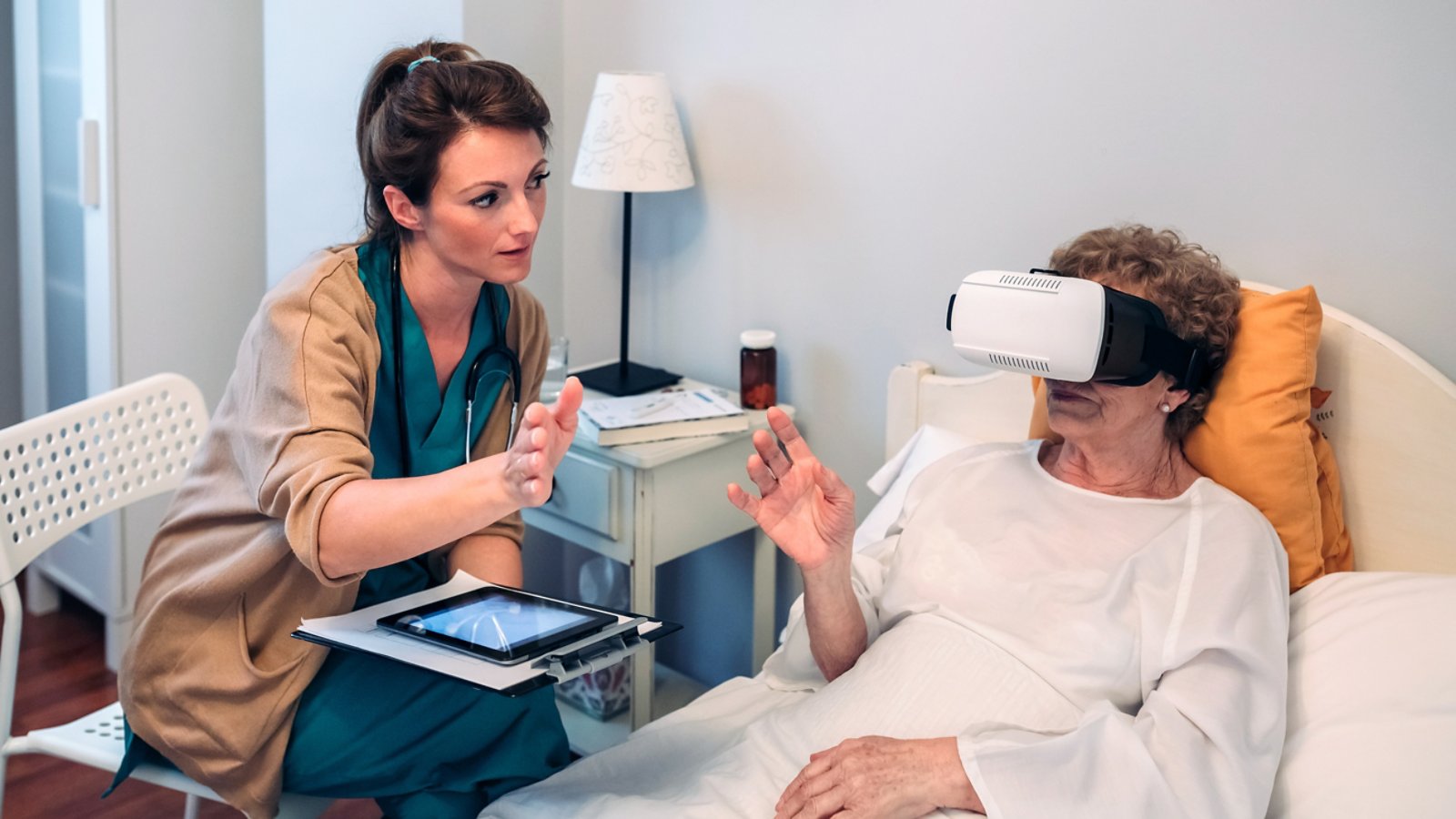
By Beverly Bell and Rajesh Jaluka
Remote patient monitoring and hospital-at-home care have become common in the healthcare industry, enhancing both accessibility and flexibility.
Despite these advancements, there remains ample room to innovate, as the industry strives to deliver the best possible experience for patients.
At the forefront of this evolution is extended reality (XR): an umbrella term used to describe various forms of immersive technologies, namely virtual reality (VR), augmented reality (AR) and Mixed Reality (MR).
VR and AR are two technologies associated with spatial computing, which brings the virtual and physical worlds together. Like XR, spatial computing is an umbrella term, credited to MIT’s researcher Simon Greenwold in 2003.1 For the purposes of this article, we will use XR with the understanding that they are used interchangeably in the industry.
XR technologies hold the potential to improve the quality of care for patients, improve patient satisfaction while receiving care, improve the skills and knowledge of caregivers and broaden participation in remote or virtual therapeutic research.
Let’s explore some of the most promising applications of XR in healthcare—and three steps your organization can take today to reap the benefits of these tools.
XR applications in education and learning
Schools of medicine, nursing, pharmacy and more are integrating XR into curriculums to provide scenario-based simulation lessons. Simultaneously, from multiple locations, a class of students can witness what a seizure or anaphylactic shock looks like using a VR headset. Through the same headset, these students can practice diagnosing and treating the virtual patient, all while receiving real-time consultation from instructors.
Likewise, healthcare organizations can offer training that is both virtual and hands-on using XR—such as orientation training or learning how to operate a new piece of bedside equipment.
Healthcare organizations can offer training that is both virtual and hands-on using XR.
XR applications in surgery
In advance of surgery, XR can help surgeons prepare. For example, XR can simulate a multitude of unplanned challenges to ensure surgeons are prepared for the variances that could be encountered during the difficult procedure. Also, the use of XR can enable the surgeon to identify any anatomical variances a patient may have or tumor boundaries to aid the best possible postoperative outcomes.
An analysis of 168 publications revealed that the use of virtual reality for pre-operative planning helped not only to shorten the operating sessions, but also to reduce surgical insults (injuries or damage to the patient during surgery) and boost surgeons’ confidence.2
XR applications in therapeutic practices
Possible therapeutic applications for XR are extensive and wide-ranging. When caregivers employ XR to address acute and chronic pain, guided imagery (for example, visualization exercises) can be used to promote calmness in patients and avoid unnecessary exertion or excitement.
In adult patients, situations may arise where the use of XR can help deter the patient’s thoughts from receiving care (for example, giving blood or receiving chemotherapy).
For pediatric patients, XR can be deployed to achieve the opposite effect: to excite or entertain the young patients, providing them with a sense of control or an escape while they receive care.
XR programs for self-guided rehabilitation exercises can help redirect negative thoughts to a positive experience, such as memories of a favorite vacation or occasion. And during behavioral health treatments, XR may help to reduce medication dependence and improve self-management of behavioral symptoms.
VR has also been used to mitigate pre- and post-operative anxiety levels amongst patients—thus reducing the need for sedatives.2
XR can simulate a multitude of unplanned challenges to ensure surgeons are prepared for the variances that could be encountered during the difficult procedure.
XR applications in maintenance work
Organizations are beginning to use XR tools to train maintenance personnel on medical equipment. Staff can practice equipment maintenance tasks in a nonjudgmental learning environment, when and where their schedule permits.
XR also can help optimize inspection and maintenance procedures. For example, an XR headset might be used to view a ventilator’s sensor data to determine when maintenance is required, diagnose issues or monitor the success of a repair. The XR headset could display the manual or support talking to a manufacturer representative for repair guidance.
How to prepare your organization to scale XR technologies
Given the promise of XR in healthcare, the challenge for executives now is in prioritizing use cases that will drive the most value and return on investment.
In 2022, the VR market within the healthcare sector rose to over US$2.3 billion worldwide. By 2030, the market is expected to increase to over $25 billion, with a forecast compound annual growth rate of 34.9%.3
- Assess your network capabilities XR wearables place high demands on storage, compute and edge. Organizations considering XR use cases will want to ensure they have established a secure and stable 5G connection. If your organization has an on-premises datacenter, the opportunity may require additional storage. If your organization uses cloud services, the opportunity may require adjusting alerts to reflect increased usage.
- Check in with your security team All new technologies introduce risks to cybersecurity and privacy that need to be assessed prior to use. Take steps to prepare your staff before rolling out any new XR tools or technologies. Organizational change management programming may also be needed to help staff understand the potential value of XR, improve adoption of new tools and enhance overall security awareness.
- Keep your eye on future use cases To maximize your investments in XR tools, invite your teams to continue exploring additional applications, even after the initial implementation of your XR project.
Patients who prefer virtual visits may become open to an XR experience. Rather than watching a pre-operative video online prior to surgery, the patient could instead experience XR depicting what will happen during the surgery and what the surgical area will look like afterward. As hospitals expand technology utilization to meet consumer demands, XR can help provide a boost to patient satisfaction scores. Consider how XR can reshape the relationship with your customers as well as employees and medical staff.
Remaining vigilant about emerging XR use cases like these is a key strategy for maintaining a competitive edge as your team works towards the shared mission of providing the best possible experiences for your patients.
Beverly Bell is the Clinical Advisor for US Healthcare at Kyndryl and Rajesh Jaluka is the Vice President and CTO for US Healthcare and Government at Kyndryl
1 What is Spatial Computing? The Complete Guide, UC Today, June 2023.
2 The impact of extended reality on surgery: a scoping review, Springer: International Orthopedics, January 2023.
3 Virtual Reality in Healthcare Market | Revenue Statistics [2030] (fortunebusinessinsights.com), Fortune Business Insights, May 2023.


